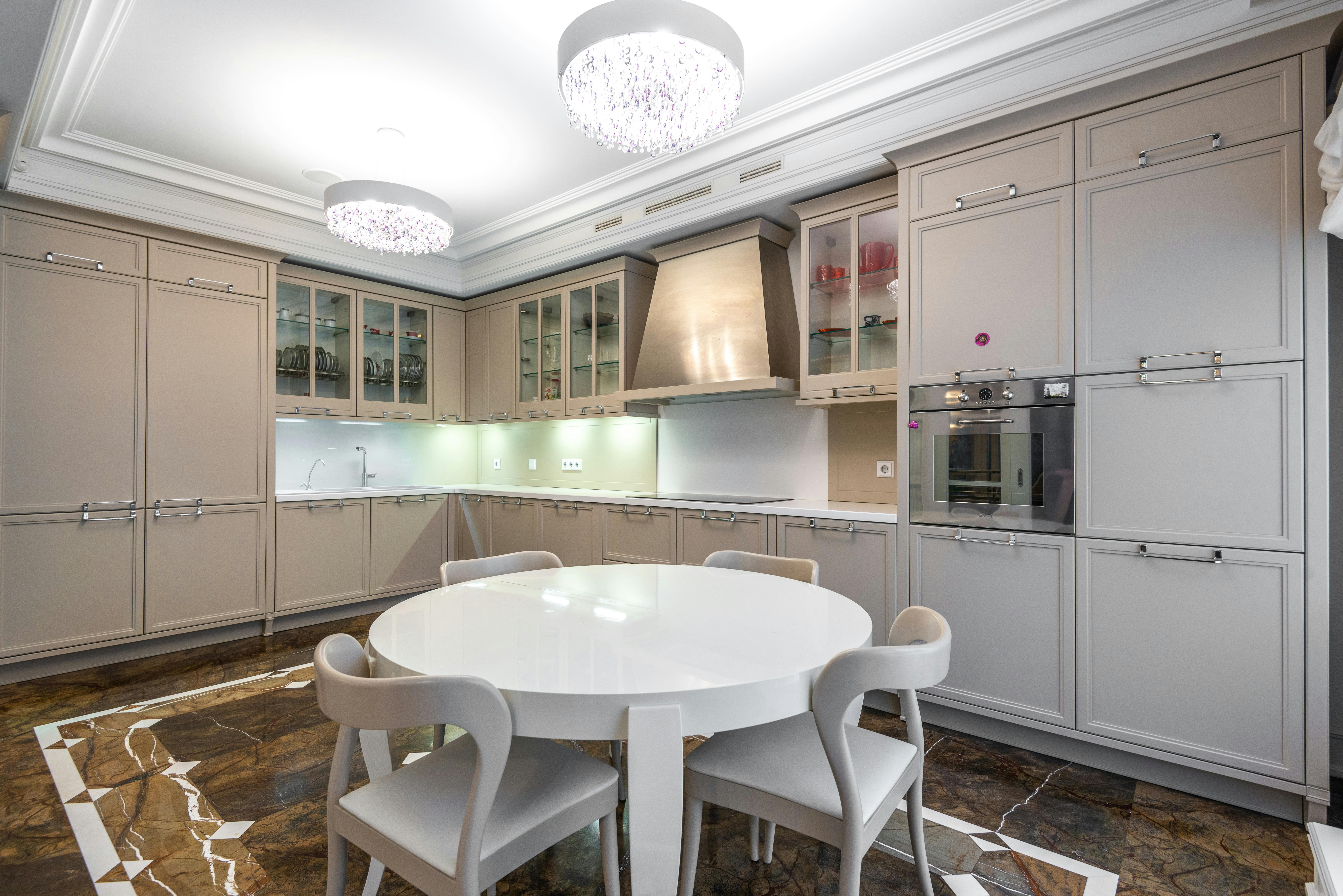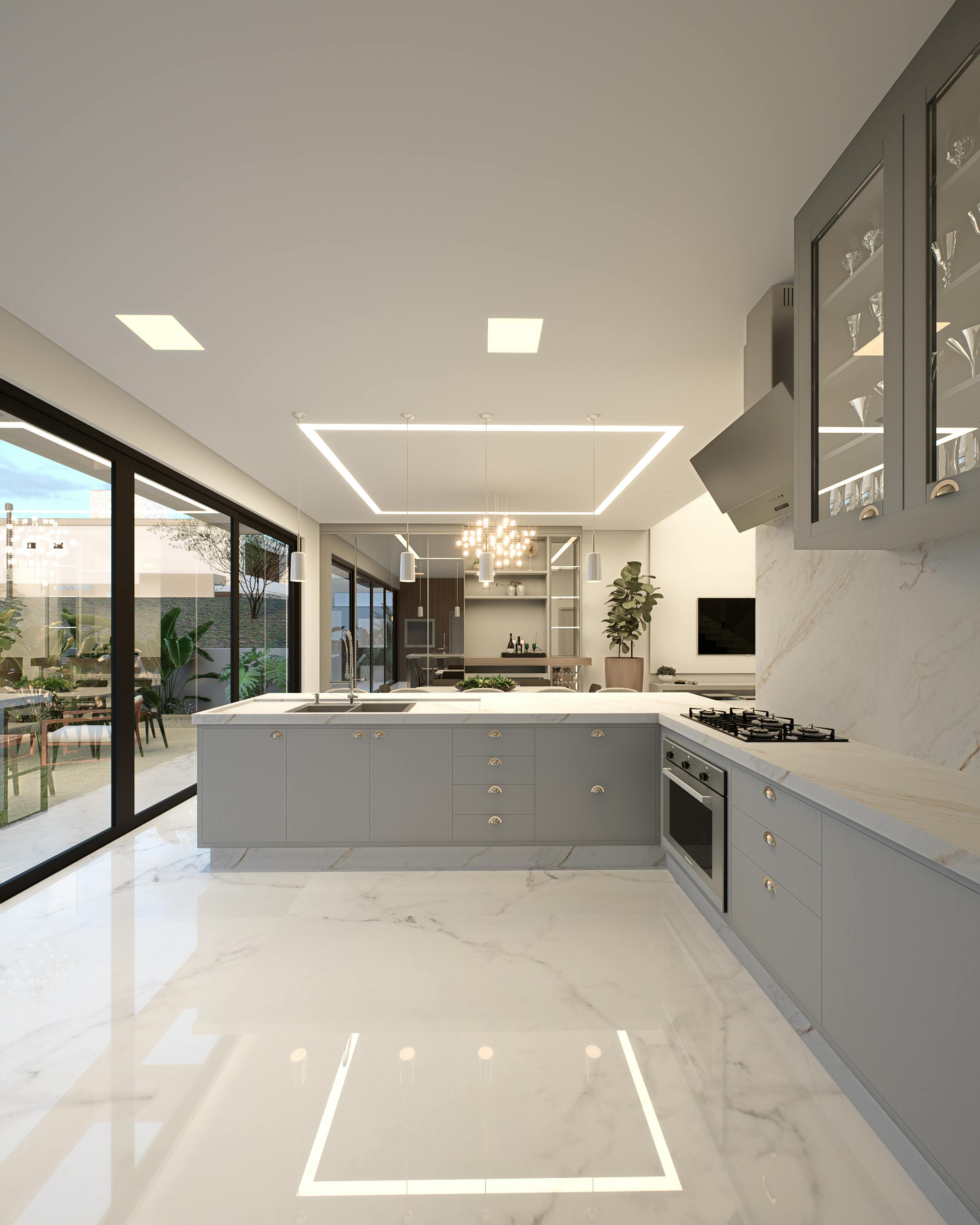Luxury Kitchen and Culinary Suite Transformations: How Visionary Designers Create Chef-Caliber Gourmet Sanctuaries with Professional-Grade Appliance Integration and Artisan Stone Craftsmanship in 2025
The heart of every luxury home beats strongest in the kitchen, yet most high-end residences feature culinary spaces that prioritize aesthetics over function. You walk into stunning kitchens that look magazine-perfect but feel disconnected from the realities of serious cooking. The cabinetry gleams, the marble sparkles, but the workflow frustrates even the most patient home chef. This disconnect between beauty and performance represents the greatest missed opportunity in luxury home design today.
The most visionary designers in 2025 understand that today’s affluent homeowners demand more than just beautiful kitchens. They want culinary sanctuaries that rival professional restaurant kitchens while maintaining the warmth and sophistication of luxury residential design. Through strategic professional-grade appliance integration and masterful artisan stone craftsmanship, these designers create spaces that transform cooking from a daily task into an elevated experience that celebrates both craft and cuisine.

This Photo was taken by Max Vakhtbovycn.
Beyond the showroom: the professional kitchen renaissance in luxury homes
The transformation of luxury kitchens from display pieces to functional culinary theaters represents one of the most significant shifts in high-end residential design. Market data from 2024 reveals that 78% of luxury homeowners now prioritize kitchen functionality over traditional formal dining rooms, marking a fundamental change in how affluent families experience their homes.
This shift demands a complete reimagining of kitchen design principles. Traditional luxury kitchens focused on symmetry, visual impact, and entertaining appeal. Today’s culinary suites must seamlessly blend professional-grade functionality with residential comfort. The challenge lies not in choosing between beauty and performance, but in achieving both through sophisticated design integration.
Professional-grade appliances once relegated to restaurant kitchens now anchor luxury residential culinary suites. These aren’t simply oversized versions of consumer appliances but purpose-built tools designed for serious cooking. A commercial-style range hood that moves 1,200 cubic feet of air per minute isn’t just about power – it’s about creating a cooking environment where searing proteins or wok cooking becomes possible without compromising air quality throughout the home.
The psychology of culinary workspace design
Understanding how professional chefs move through their workspace informs the most successful luxury kitchen transformations. The classic work triangle becomes a work zone concept, where multiple cooking activities can happen simultaneously without interference. This requires careful consideration of sight lines, storage accessibility, and equipment placement that goes far beyond traditional residential kitchen planning.
Visionary designers recognize that luxury kitchen users aren’t just cooking for their families – they’re often entertaining, teaching children to cook, or pursuing culinary hobbies that require specialized equipment and workspace. This reality demands flexible spaces that can transform from intimate family breakfast preparation to elaborate dinner party staging areas.

This Photo was taken by Luiza Venanci.
Professional-grade appliance integration strategies that preserve luxury aesthetics
The integration of professional-grade appliances into luxury residential kitchens requires strategic planning that goes beyond simple appliance selection. The most successful transformations treat each appliance as both a functional tool and a design element that contributes to the space’s overall aesthetic narrative.
Range selection exemplifies this integration challenge. A 48-inch professional range delivers the cooking power serious home chefs demand, but its visual weight can overwhelm residential-scale spaces. Successful integration often involves creating custom millwork that frames the range as a focal point while maintaining proportional balance with surrounding cabinetry and architectural elements.
Refrigeration solutions that disappear into design
Professional-grade refrigeration presents unique integration opportunities in luxury kitchens. Column refrigerators and freezers allow designers to distribute cold storage throughout the culinary suite while maintaining clean sight lines. A 36-inch refrigerator column positioned near the prep sink serves different purposes than pantry-style refrigeration near the range area.
The most sophisticated installations incorporate multiple refrigeration zones tailored to specific culinary functions. Wine storage at 55 degrees, produce storage at 38 degrees, and meat aging capabilities at precisely controlled temperatures create a restaurant-quality ingredient management system within residential cabinetry.
| Appliance Category | Professional Specification | Luxury Integration Strategy | Typical Investment Range |
|---|---|---|---|
| Range/Cooktop | 25,000+ BTU burners, 1200°F grill | Custom steel surround, ventilation integration | $15,000 – $35,000 |
| Refrigeration | Sub-Zero column systems, dual compressors | Panel-ready integration, zone placement | $20,000 – $50,000 |
| Ventilation | 1200+ CFM, variable speed control | Custom hood design, makeup air systems | $8,000 – $25,000 |
| Dishwashing | Multiple zone systems, steam finishing | Drawer configurations, quiet operation | $3,000 – $12,000 |
Ventilation systems represent perhaps the most critical professional-grade integration challenge. Moving sufficient air volume to support high-heat cooking requires ducting and makeup air systems that must be planned during initial construction phases. The most successful luxury kitchen transformations often involve comprehensive HVAC integration that treats the culinary suite as a specialized climate zone within the home.
Smart technology integration in professional appliances
The convergence of professional-grade appliances with smart home technology creates new possibilities for luxury kitchen functionality. Connected appliances from manufacturers like Wolf and Sub-Zero allow precise temperature control, cooking process monitoring, and maintenance scheduling through integrated home automation systems.
However, technology integration in luxury kitchens requires careful consideration of interface design and user experience. Touch screens and digital displays must complement rather than compete with the space’s material palette and aesthetic sensibilities.

This Photo was taken by Curtis Adams.
Artisan stone craftsmanship: the foundation of culinary luxury
Stone selection and fabrication in luxury culinary suites extends far beyond countertop considerations. The most successful transformations treat stone as a three-dimensional design element that defines spatial relationships, workflow patterns, and aesthetic character throughout the cooking environment.
Natural stone brings inherent performance benefits to serious cooking environments. Marble’s thermal properties make it ideal for pastry preparation, while granite’s durability withstands the demands of heavy cooking equipment. Quartzite combines natural beauty with enhanced stain resistance, making it particularly suitable for areas where wine and acidic ingredients are frequently used.
The artisan craftsmanship element distinguishes luxury installations from standard stone applications. Book-matched slabs create dramatic focal points behind professional ranges, while waterfall edges on islands provide both visual impact and functional workspace definition. These details require stone fabricators who understand both the


